 Saturday, December 15, 2018 at 12:52PM
Saturday, December 15, 2018 at 12:52PM HAPPY HOLIDAYS!
Enjoy our year-end issue, and we'll see you back here
on January 9, 2019!
(And scroll to the bottom of the page for news updates during the break!)
BEST OF “ON THE TABLE” 2018
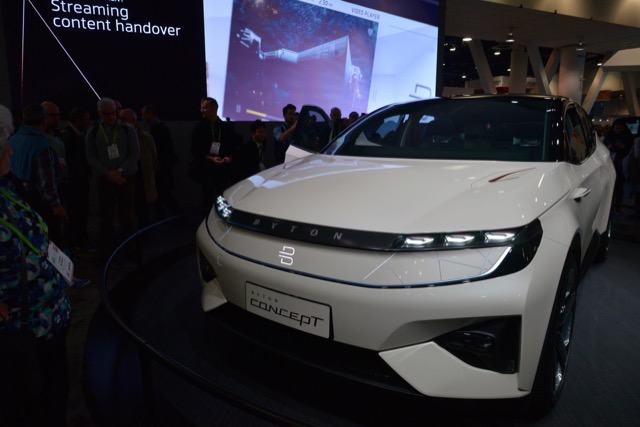
(newspress USA)
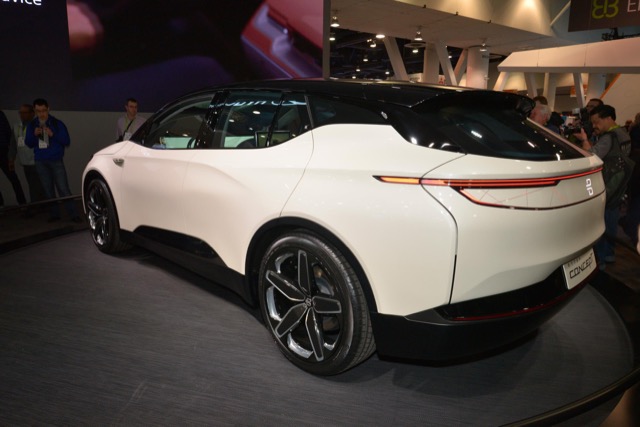
(newspress USA)
This crap-tastic "concept" is not a concept at all, it's a pipe dream brought to so-called life on a wing and a prayer and not much else. Though the precious tech "intelligentsia" hordes insist that the Consumer Electronics Show has superseded all other shows - auto or otherwise - the fact remains that when CES keeps allowing blatant celebrations of vaporware to happen on a consistent basis, the credibility of the show is more than a little suspect. The latest evidence, or more specifically the latest outrage unleashed on the landscape? Byton, which is the brand name of Future Mobility Corporation of Nanjing, China. “The name ‘Byton’ comes from 'bytes on wheels' so it somehow reflects our idea to make a computer on four wheels. The focus of the brand will be much more on the experience of the passenger on the inside,” said David Kirchert, President of Byton. Uh, sure. Filled with promises - $70,000 of technology for just $45,000!! - the Byton sounds like every other blue-sky concept of the last half-decade. In other words, going nowhere fast. Faraday Future, anyone? Bueller? The best part of this glorious charade? The company has raised $250 million so far. Yes, you read that correctly, $250 million. That's it. Do you know what $250 million will get you toward the development of a new car? A lot of nothin'. Again, the fact that the CES allowed this unmitigated bullshit to be presented at its show is pretty much an indictment of everything they stand for. I would recommend that the CES organizers stand down and institute a moratorium on having any automaker introduce anything at the show for at least two years. Then we can all regroup and let the serious future transportation issues be addressed by companies that actually know what they're doing. -PMD (1/10/2018)
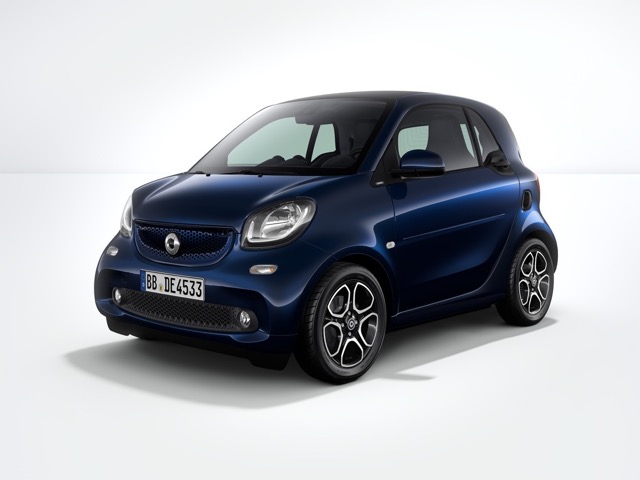
(Mercedes-Benz)
Someone needs to tell Dieter - and smart - to stand down, permanently. From the "The Flat-Out Ridiculous" File: 2018 marks ten years of smart sales in the United States. And to recognize this milestone of abject futility, Mercedes has decided that a 10th Anniversary Edition 2018 smart fortwo electric drive coupe is just what the market needs. The fact that Dieter Zetsche - and make no mistake it's all on him - clings to the notion that this clown car is worthy of any attention at all is an homage to delusion that is simply unfathomable. (1/10)
No further comment necessary. Ian Thibodeau and Robert Snell of The Detroit News reported the following: "Fiat Chrysler Automobiles NV officials paid more than $1.5 million to United Auto Workers officers and employees to sway union contract negotiations, federal prosecutors said, part of a $4.5 million corruption scandal involving Detroit’s No. 3 automaker. The accusations made Monday in a plea agreement with former FCA labor negotiator Alphons Iacobelli say for the first time in the investigation that executives’ actions were intended to corrupt UAW contract negotiations to favor Fiat Chrysler. The plea deal suggests the corruption was more widespread than previously disclosed. It lasted for years as Fiat Chrysler officials lavished UAW labor leaders with cash payments and luxury items, including airfare, jewelry and secret $50,000 payments. Federal court records also portray a cozy relationship between Fiat Chrysler executives and labor leaders after the automaker emerged from its 2009 bankruptcy." (1/24)

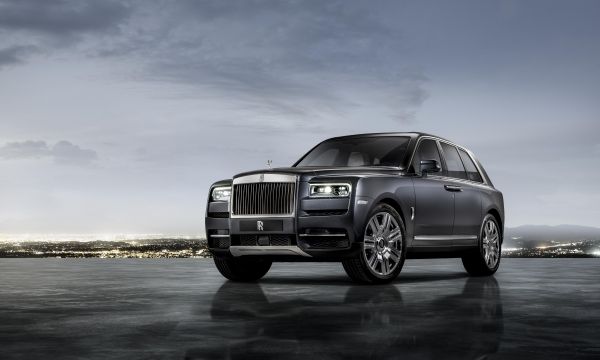
(Rolls-Royce)
Here are the details, according to Rolls-Royce (with our comments) of the new Cullinan SUV: Rolls-Royce PR minions say, "The most anticipated car of 2018 and, quite possibly, the most anticipated Rolls-Royce of all time." (Uh, how about no?) It is named after the largest diamond ever discovered, which now resides in the British Crown Jewels. (We did not know that.) An all-terrain high-bodied car that makes the idea of authentic, luxury off-road travel a reality for the first time. Luxury travel is now Effortless, Everywhere. (For the first time? Uh, no. And "Effortless, Everywhere" -? Pay attention, that's the Cullinan's tagline.) Contemporary and functional design ensures Cullinan gains iconic status in the face of increasingly bland SUV designs. (Okay, that's a stretch.) It's the first “three-box” car in the SUV-sector. Cullinan’s rear partition wall creates a distinct environment for passengers, separated from the luggage compartment. (Huh.) It's the most practical of Rolls-Royces. Cullinan is the most versatile, family oriented, fun-to-drive super-luxury SUV available today. (Is this really what we want from a Rolls-Royce?) It's the second new Rolls-Royce to sit on the all-new aluminium ‘Architecture of Luxury,’ Cullinan is the most technologically advanced, and only purpose-built, luxury SUV in the world. (Land Rover, Lamborghini and Bentley might take issue with that description.) Tested to destruction all over the planet, Cullinan is an incredibly capable off-roader that sees the development of the ‘Magic Carpet Ride’ for off-road enjoyment, without sacrificing any Rolls-Royce on-road behaviour. (We'll see. Wait a minute, no we won't. We'll never get near one.) Cullinan offers a suite of Bespoke features developed specifically for the many various lifestyles of its owners including the Viewing Suite and the Recreation Module. (Whatevs.) The 6.75 litre twin-turbo V12 Rolls-Royce engine delivers 563HP and 627 lb-ft of torque to the all-new all-wheel drive, all-wheel steer system. (563HP? We likey.) And finally, A century-long pedigree of adventurous quests and campaigns successfully carried out across all terrains thanks to the luxury offered by a stout vehicle that was swift, stealthy and dependable. “A Rolls in the desert is above rubies” – T.E. Lawrence. (Kudos to the Rolls-Royce PR minions for quoting T.E. Lawrence. Well done.) (5/9)
By Tom Pease
Los Angeles. Way back in 1993, someone had the bright idea that for Father’s Day, the City of Beverly Hills and the Rodeo Drive Committee would shut down Rodeo Drive to traffic and have a show of classic cars. Not just any classic cars, but some of the rarest and most beautiful ever seen, many from private collections rarely open to the public. Thus was born the Rodeo Drive Concours d’Elegance.
Do I have to type that I’ve been to every one?
This year was the Silver anniversary. So of course the theme of the 400 block was silver cars - ranging from Adam Carolla’s 1965 Lamborghini 350 GT to the Mullin Auto Museum’s Bugatti EB1 - with everything in between.
As in each year, everything was in between, literally. The ends of the event are reserved for sponsored stands, on the North by Ferrari and Aston Martin (Okay the new one is drool-worthy) and on the south by Tesla and Lexus. I didn’t waste much time on these ends because I have a decent chance of being hit in a cross-walk in Beverly Hills by any of those. I also didn’t linger because although the width and breadth of the 2, 3 and 400 blocks of Rodeo have not grown, the number of people who are attending has. I was there spot on at 10:00 a.m. and it was already crowded. I can’t imagine what it would have been like at say, 2:00 p.m.
In any event, I've attached a few snaps I took before the camera battery died (note to self, spare battery next year) and I fled to the local Coffee Bean for an ice-blended.
The 2019 Concours d’Elegance should be Sunday, June 16. It will be, once again, a fun event and free, but bring sunscreen, water and patience. (6/20)

When 37-year-old Timo Bernhard crossed the finish line of the Nürburgring-Nordschleife on Friday morning (6/29) at the wheel of the Porsche 919 Hybrid Evo he set a new, absolute, all-time track record with a blistering lap of 5 minutes and 19.55 seconds. (Watch the video here. -WG) The two-time Le Mans winner and reigning World Endurance Champion beat the lap record on the revered 20.8 kilometer long German race circuit that had stood for 35 years. On May 28 in 1983, Stefan Bellof lapped the world-renowned track with a Porsche 956 C in a legendary time of 6:11.13 minutes. The Porsche 919 Hybrid Evo is a development of the Le Mans prototype with which Porsche won the 24 Hours of Le Mans in 2015, 2016 and 2017 as well as the FIA World Endurance Championship three times in a row – manufacturers’ and drivers’ titles respectively. (6/27)
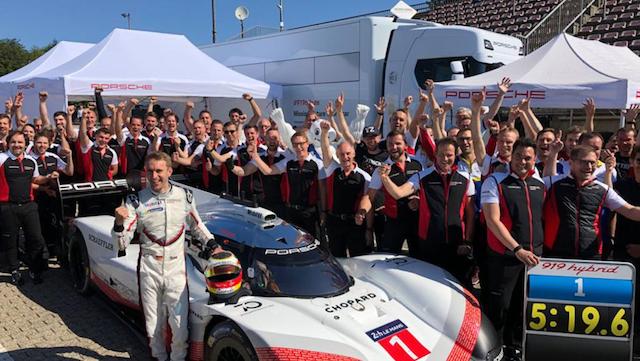

A client commissioned California-based Singer Vehicle Design to build the ultimate 911, incorporating advanced technologies throughout. The result? Singer Vehicle Design’s Dynamic and Lightweighting Study (DLS), a client-inspired collaboration with Williams Advanced Engineering and a formation of technical partners in pursuit of the most advanced air-cooled Porsche 911 in the world. There are so many unbelievable trick technical features in this car that we're guessing the total bill came to around $1.6 million, including the donor 911. It was shown at the 2018 Goodwood Festival of Speed last July, in West Sussex, England. It also appeared at Monterey Car Week in August. (7/11)


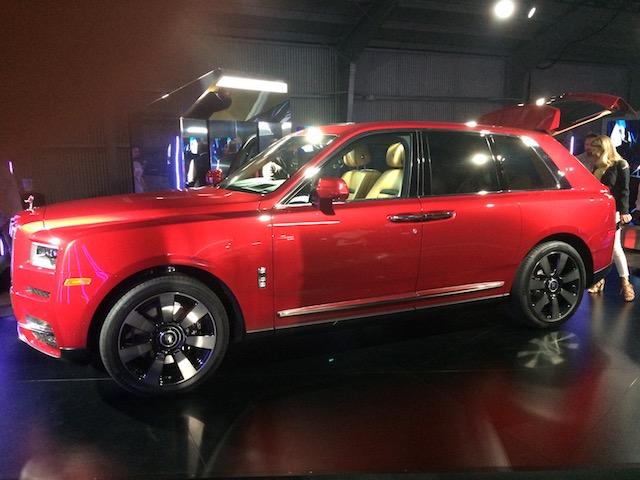
By Tom Pease
And a beast it is. The styling somewhat manages to belie the sheer mass of it; I am sure that it's at least as large if not larger than an Escalade, an SUV that almost gleefully revels in it's own corpulence. Except for the upright grill and the (I am sure retractable) Flying Lady there isn't much that screams "Rolls" to the uninitiated. But I guess when you're piloting a $325,000.00 invitation to class warfare, it's best to keep it somewhat on the down low.
I was only briefly in the interior, which is covered with the finest of the finest and everything is finest, etc. etc. However the thing is that everyone from Audi to Hyundai has raised the bar so much on interiors that to justify stratospheric prices you're going to have to have to get stratospheric materials. Leather? Try Ostrich. Try Alligator. Wood on the dash? Ha! I can get that on a Veloster. Try Marble. Try Granite. Maybe asteroid.
I did look at the rear compartment on both cars. The red one was I suppose the standard one. It was just carpeted (no doubt with something terribly expensive; it looked far better than my rugs at home.) I was there with a couple who looked as if they could afford one and the man showed me that there was a button that folded the front fourth of the floor up like a ramp. The rear seats fold down, but do not create a flat floor so the ramp is there I suppose so that Sneaves the butler can slide those extra cases of Bollinger onto the folded back seats. We joked that it was there for the trips to Home Depot. Polite laughter all around.
The other one had the picnic seats (which a nice young man swooped in to show me as I was pressing buttons and looking clueless.) Apparently this is a module which, when the correct button is pressed, extends out a platform with two little seats, the backs of which can be folded up and an almost comical little table that powers up to extend perhaps and inch and a half. I suppose the idea is that one would be taking this to say, Ascot to sip the Bolly Sneaves stocked the (shockingly not cooled) storage with. The Prole in me thought "Massive overkill for a Brewers game." The nice young man told me that the catch I was blithely releasing was to remove the whole magilla; he proudly stated that one, on their own could remove the whole assembly without going to the dealer and store it if it was not going to be used. I could not help but think that at that price point not only should I (or Sneaves) not have to remove it, but the Dealer should store it for me, like Mercedes dealers did for SL Customers in the 70's and 80's.
All kidding aside, it is a beautiful piece that I think lets it down in certain areas, at least ones I saw in the 20 minutes I was there. Now the people at Rolls could chime in and tell me I am wrong, but I would expect if you are going to have the trick picnic seats (whatever Rolls calls them) that they would include storage that is heated or cooled, so that while you are watching the ponies run or the sunset over wherever your perrier is chilled or your hot chocolate is warm. If seats are going to fold, they should fold flat to the load floor so that barn find Klimt can lay flat on the way to the restorer.
But of course this is so not me. Even with PowerBall winnings, if I was going to get an SUV it would be far more for picking up mulch than a Manet. I would love to spend more time with the Cullinan to understand it more, but I am sure the previous six paragraphs of snark will put paid to that, as well as any further invitations. So it goes. (7/11)

This year marks the 50th anniversary of Automobili Lamborghini’s Espada (above) and Islero models. The Espada was the first series production four-seater model in the history of Lamborghini. Of all the marque’s historic cars, it also boasts one of the highest numbers of units produced: 1,226 during its 10-year production run. The Espada was designed by Marcello Gandini for Carrozzeria Bertone. It sits very low to the ground (standing at little less than 1.20 meters high) but is nevertheless extremely spacious. The Islero – whose official name was initially the Jslero – was produced from 1968 to 1970 in two versions: the Islero and, for 1969, the Islero S. The Islero was based on the 400 GT, but revised for larger tires and wider wheels. It was designed by Mario Marazzi of Carrozzeria Marazzi. It was equipped with a longitudinal, front-mounted 4.0-liter (3,929 cc) V12 engine with dual overhead camshafts per cylinder, with six twin-barrel Weber carburetors. The maximum speed was approximately 250 km/h (260 km/h for the S version). It is a very rare model. Only 225 units were produced: 155 under the name Islero and 70 with the name Islero S. Lamborghini Polo Storico, the division devoted to the House of the Raging Bull's historic cars, has completed the restoration of the Islero and the Espada that belong to the Lamborghini Museum. The 50th anniversary celebrations of the Espada and the Islero included a tour in Umbria (September 7-11, 2018), organized by Polo Storico Lamborghini. (7/25)



(Images courtesy of Goodguys/PPG)
Builder's Choice award-winning 1963 Lincoln Continental.
One of the biggest and most popular automotive events each summer is the Goodguys PPG Nationals in Columbus, Ohio. The 21st annual even drew tens of thousands of custom car fans to the Ohio Expo Center in Columbus the weekend of July 6-8. Six thousand hot rods, street rods, classics and customs jammed the Center, and we'd thought we'd share some images of our favorites. Builder's Choice award-winning 1933 Ford 5-window coupe.
Builder's Choice award-winning 1933 Ford 5-window coupe. Builder's Choice award-winning 1956 Lincoln Continental Mark II.
Builder's Choice award-winning 1956 Lincoln Continental Mark II. Builder's Choice award-winning 1934 Ford pickup.
Builder's Choice award-winning 1934 Ford pickup. PPG Dream Car award-winning 1960 Ford Starliner.
PPG Dream Car award-winning 1960 Ford Starliner. PPG Dream Car award-winning 1960 Chevrolet Corvette. (8/8)
PPG Dream Car award-winning 1960 Chevrolet Corvette. (8/8)

Mercedes-Benz unveiled the EQ Silver Arrow show car at Monterey Car Week. An homage to the successful record-breaking Mercedes-Benz W 125 car from 1937, the one-seater EQ Silver Arrow glistens in its Alubeam Silver paintwork, which is reminiscent of the historic Silver Arrows, which, for weight reasons, did not have a white paint layer. "Over 80 years ago, the historic Silver Arrows demonstrated that Mercedes-Benz was a pioneer when it came to speed, thanks, among other things, to their streamlined shape," says Gorden Wagener, Chief Design Officer at Daimler AG. "The EQ Silver Arrow show car draws on that legacy. Intended for acceleration and driving pleasure, it embodies progressive luxury and provides an insight into the future of our design. As a result, the show car drives the design idiom of our new EQ product and technology brand to the top." Mercedes-Benz PR minions chimed in with this: "EQ brand is shaped by the avant-garde, distinct aesthetic of Progressive Luxury, which arises from the combination of a previously unknown beauty, the conscious clash of digital and analogue elements, as well as the seamless merging of intuitive and physical design." (8/22)
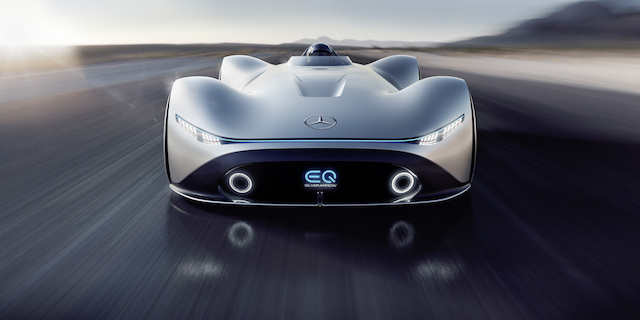 The EQ Silver Arrow's streamlined silhouette is 5.3-meters long and its body structure is made of carbon fiber. The multiple layers of paintwork in Alubeam Silver are designed to appear like liquid metal on the surface. Other exterior highlights include the driver's cockpit, which can be folded forward, and the partially free-standing multi-spoke wheels. The non-rotating hub caps and the partial trim on the wheels are other stylish highlights. The 168 spokes per wheel are made of lightweight aluminum and painted a rose gold color, which is also a signature of the EQ brand. The EQ Silver Arrow has slick 255/25 R 24 tires at the front and 305/25 R 26 tires at the rear. Pirelli embossed a star pattern on the tread. The rear diffuser has two extendible rear spoilers that act as an air brake by increasing the wind resistance when deceleration is desired.
The EQ Silver Arrow's streamlined silhouette is 5.3-meters long and its body structure is made of carbon fiber. The multiple layers of paintwork in Alubeam Silver are designed to appear like liquid metal on the surface. Other exterior highlights include the driver's cockpit, which can be folded forward, and the partially free-standing multi-spoke wheels. The non-rotating hub caps and the partial trim on the wheels are other stylish highlights. The 168 spokes per wheel are made of lightweight aluminum and painted a rose gold color, which is also a signature of the EQ brand. The EQ Silver Arrow has slick 255/25 R 24 tires at the front and 305/25 R 26 tires at the rear. Pirelli embossed a star pattern on the tread. The rear diffuser has two extendible rear spoilers that act as an air brake by increasing the wind resistance when deceleration is desired.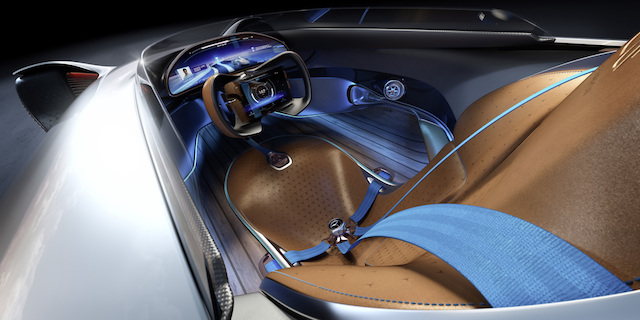 The interior of the EQ Silver Arrow is one of contrasts. On the one hand, it uses traditional, high-quality materials like Saddle Brown genuine leather on the seat and steering wheel, brushed aluminum throughout the interior and solid walnut with darker coniferous wood pinstripes on the floor. On the other hand, modern, high-tech features such as the large projection surface for the panoramic screen and innovative user experience solutions such as the virtual race option represent the EQ's visionary character. The seat surface and backrest have a unique pattern aligned with the seat contour; stars are etched with laser engraving. AIRSCARF neck-level heating is integrated into the seat and it is equipped with a four-point seatbelt. The pedals can be adapted to the driver's specific stature, with a controller located on the seat for adjusting the pedals. To match the exterior paint finish in Alubeam Silver, the side walls of the interior are covered in a luxurious, grey suede.
The interior of the EQ Silver Arrow is one of contrasts. On the one hand, it uses traditional, high-quality materials like Saddle Brown genuine leather on the seat and steering wheel, brushed aluminum throughout the interior and solid walnut with darker coniferous wood pinstripes on the floor. On the other hand, modern, high-tech features such as the large projection surface for the panoramic screen and innovative user experience solutions such as the virtual race option represent the EQ's visionary character. The seat surface and backrest have a unique pattern aligned with the seat contour; stars are etched with laser engraving. AIRSCARF neck-level heating is integrated into the seat and it is equipped with a four-point seatbelt. The pedals can be adapted to the driver's specific stature, with a controller located on the seat for adjusting the pedals. To match the exterior paint finish in Alubeam Silver, the side walls of the interior are covered in a luxurious, grey suede.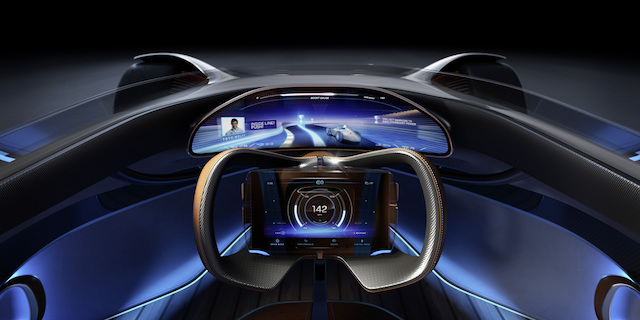 The driver of the EQ Silver Arrow is encompassed by a large panoramic screen on which a 3D image of the surroundings is projected from behind. As an indicator of future possible charging technologies, the lane of the roadway on which inductive charging is possible is superimposed onto the screen. This is where it gets crazy: "With the help of artificial intelligence, it is possible to engage in a virtual race against historic or present Silver Arrow racing cars. A virtual racetrack is superimposed onto the real roadway via the panoramic screen and the driver sees their opponent either ahead of them or behind them as a 'ghost.' The Virtual Race Coach assistance function helps one improve driving skills by giving instructions during the race," according to Mercedes-Benz. Uh, alrighty then. The driver can use the touchscreen on the steering wheel to select programs such as Comfort, Sport and Sport+, which offer different driving characteristics. Sound settings can also be configured here: choices include the sound of a current Formula 1 Silver Arrow or a Mercedes-AMG V8 engine.
The driver of the EQ Silver Arrow is encompassed by a large panoramic screen on which a 3D image of the surroundings is projected from behind. As an indicator of future possible charging technologies, the lane of the roadway on which inductive charging is possible is superimposed onto the screen. This is where it gets crazy: "With the help of artificial intelligence, it is possible to engage in a virtual race against historic or present Silver Arrow racing cars. A virtual racetrack is superimposed onto the real roadway via the panoramic screen and the driver sees their opponent either ahead of them or behind them as a 'ghost.' The Virtual Race Coach assistance function helps one improve driving skills by giving instructions during the race," according to Mercedes-Benz. Uh, alrighty then. The driver can use the touchscreen on the steering wheel to select programs such as Comfort, Sport and Sport+, which offer different driving characteristics. Sound settings can also be configured here: choices include the sound of a current Formula 1 Silver Arrow or a Mercedes-AMG V8 engine.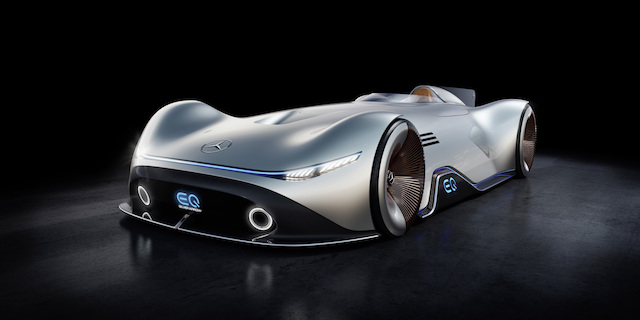 The EQ Silver Arrow is conceived as an electric vehicle with an output of 738 hp. The thin rechargeable battery in the underbody has a usable capacity of approximately 80 kWh and enables an approximate range of over 250 miles. Side air vents help to cool the battery.
The EQ Silver Arrow is conceived as an electric vehicle with an output of 738 hp. The thin rechargeable battery in the underbody has a usable capacity of approximately 80 kWh and enables an approximate range of over 250 miles. Side air vents help to cool the battery.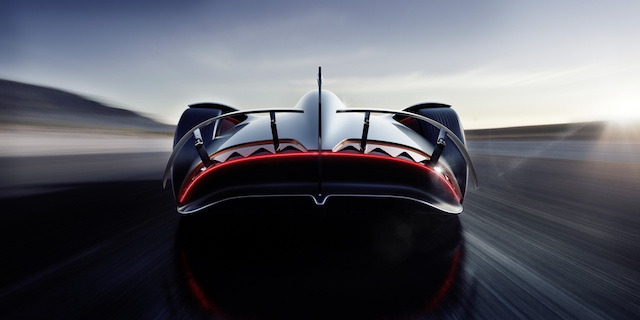
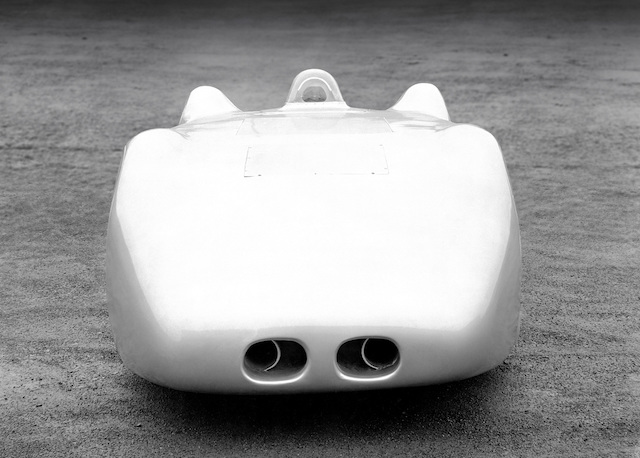 The 1937 Mercedes-Benz W 125 streamliner record car from 1937.
The 1937 Mercedes-Benz W 125 streamliner record car from 1937.Our AE Quote of the Year goes to Mike Flewitt, the CEO of McLaren, who was interviewed at the Goodwood Festival of Speed by Automotive News. AN: Lamborghini has entered the white-hot crossover/SUV market. Why is McLaren against going down that path? Flewitt: "I'm not against SUVs. They are just not what McLaren does. An SUV is hugely expensive to do. We wouldn't have the shared engineering that you need to have the kind of business model that supports what we do. When we decide to do a product there are three simple tests: It has to be right for the brand and right for the customer base, we've got to have the technology to do the best car in class and we've got to make money. An SUV starts to reduce the purity of the brand as a supercar driver's brand. Secondly, we don't have the technology. Can you imagine from a standing start if we wanted to go out and do a better car than a Range Rover, or a Cayenne — the billions we'd have to invest? Third, therefore, is we wouldn't make any money. So it doesn't tick any box." Editor-in-Chief's Note: As I've said repeatedly, before you can manage a brand you have to understand what it isn't before you can understand what it is. Kudos to Mr. Flewitt for understanding that. -PMD (8/22)
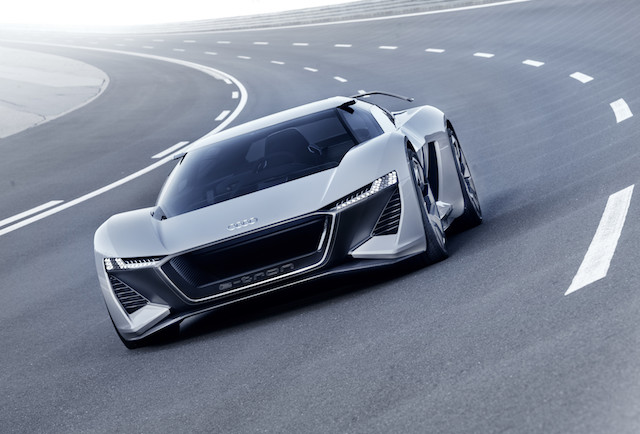
 No complex systems for piloted driving are on board and no comfort features to add weight. In their place are a driver’s seat and cockpit that are integrated into an inner monocoque shell that can be slid laterally. When driven solo, the monocoque can be positioned in the center of the interior as in a monoposto – the perfect location for the racetrack. This is made possible by the by-wire design of the steering and pedals, since a mechanical connection of the control elements is not needed. Gael Buzyn, Head of the Audi Design Loft in Malibu where the Audi PB18 e-tron was born, describes the car: “We want to offer the driver an experience that is otherwise available only in a racing car like the Audi R18. That’s why we developed the interior around the ideal driver’s position in the center. Nevertheless, our aim was to also give the PB18 e-tron a high degree of everyday usability, not just for the driver, but also for a potential passenger.” When the driver’s monocoque is slid into the side position, from where the PB18 e-tron can be steered in everyday driving like a conventional road vehicle, there is room for a passenger. An additional seat can be accessed on the other side, integrated low above the ground and equipped with a three-point seat belt. The driver also benefits when getting in and out from the easily accessible outside position of the monocoque, which can be moved when the door is open up to the sill.
No complex systems for piloted driving are on board and no comfort features to add weight. In their place are a driver’s seat and cockpit that are integrated into an inner monocoque shell that can be slid laterally. When driven solo, the monocoque can be positioned in the center of the interior as in a monoposto – the perfect location for the racetrack. This is made possible by the by-wire design of the steering and pedals, since a mechanical connection of the control elements is not needed. Gael Buzyn, Head of the Audi Design Loft in Malibu where the Audi PB18 e-tron was born, describes the car: “We want to offer the driver an experience that is otherwise available only in a racing car like the Audi R18. That’s why we developed the interior around the ideal driver’s position in the center. Nevertheless, our aim was to also give the PB18 e-tron a high degree of everyday usability, not just for the driver, but also for a potential passenger.” When the driver’s monocoque is slid into the side position, from where the PB18 e-tron can be steered in everyday driving like a conventional road vehicle, there is room for a passenger. An additional seat can be accessed on the other side, integrated low above the ground and equipped with a three-point seat belt. The driver also benefits when getting in and out from the easily accessible outside position of the monocoque, which can be moved when the door is open up to the sill. 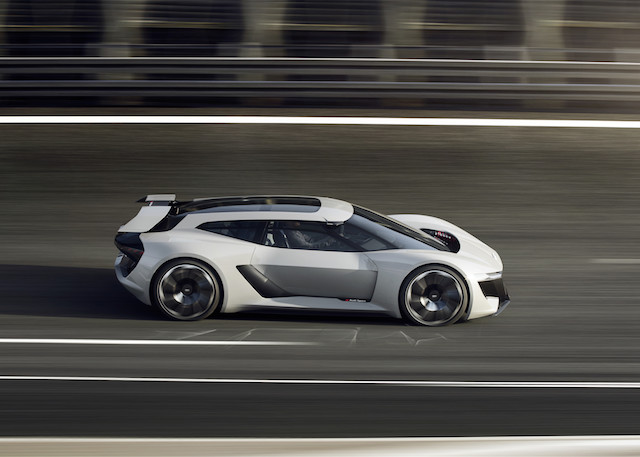 A mix of aluminum, carbon and multi-material composites and an innovative and comparatively light solid-state battery delivers a low total weight of less than 1,550 kg (3,417.2 lbs). The PB18 e-tron is 4.53 meters long, 2 meters wide and just 1.15 meters tall (14.5 x 6.4 x 4.6 ft). The wheelbase is 2.70 meters (8.9 ft). The concept uses three powerful electric motors – one up front and two in the rear. The latter are centrally located between the steering knuckles, each directly driving one wheel via half-shafts. They deliver power output of up to 150 kW to the front axle and 350 kW to the rear – the Audi PB18 e-tron is a true quattro, of course. Maximum output is 500 kW, with boosting, the driver can temporarily mobilize up to 570 kW. The combined torque of up to 830 newton meters (612.2 lb-ft) allows acceleration from 0 to 100 km/h (62.1 mph) in scarcely more than 2 seconds – a speed that differs only marginally from that of a current LMP1 prototype.
A mix of aluminum, carbon and multi-material composites and an innovative and comparatively light solid-state battery delivers a low total weight of less than 1,550 kg (3,417.2 lbs). The PB18 e-tron is 4.53 meters long, 2 meters wide and just 1.15 meters tall (14.5 x 6.4 x 4.6 ft). The wheelbase is 2.70 meters (8.9 ft). The concept uses three powerful electric motors – one up front and two in the rear. The latter are centrally located between the steering knuckles, each directly driving one wheel via half-shafts. They deliver power output of up to 150 kW to the front axle and 350 kW to the rear – the Audi PB18 e-tron is a true quattro, of course. Maximum output is 500 kW, with boosting, the driver can temporarily mobilize up to 570 kW. The combined torque of up to 830 newton meters (612.2 lb-ft) allows acceleration from 0 to 100 km/h (62.1 mph) in scarcely more than 2 seconds – a speed that differs only marginally from that of a current LMP1 prototype.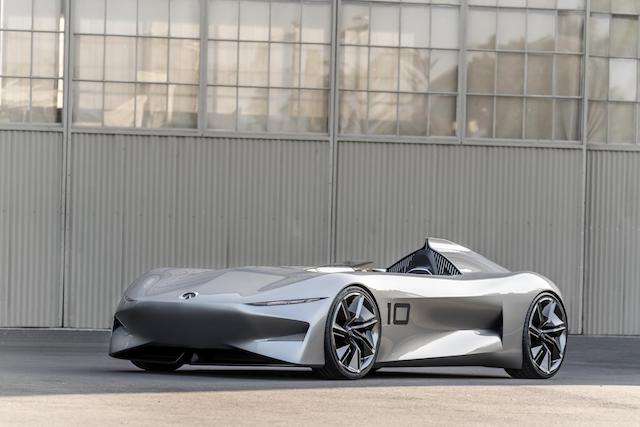
Editor-in-Chief's Note: Monterey Car Week has become the showcase of "Swingin' Dickism" as the auto manufacturers all line up to display their - ahem - wares. From the calculated greed fest on display at the various auctions, to the wildly extravagant manufacturer pavilions, Monterey Car Week is the pinnacle of over-the-top automotive excess that has become almost beyond comprehension at this point. The first factory entry for your viewing pleasure this week is the INFINITI Prototype 10 - which the company's PR minions framed this way: "Bridging past and future, the INFINITI Prototype 10 recaptures the spirit of early speedsters for an era of electrified performance... The Prototype 10 provides a window into INFINITI's desire to deliver driving pleasure, thrilling performance and range confidence." The Prototype 10 was overseen by INFINITI's Japan design center, designed digitally in the U.K., and then crafted by hand in San Diego, California. Karim Habib, Executive Design Director, INFINITI, had this to say: "The INFINITI Prototype 10 echoes the layout and design of early speedsters. This period saw the creation of some of the most evocative car designs of all time, where power was celebrated through high-powered single-seat competition cars. Our new concept speaks of an electrified future, something which is reflected in its form and details. It is appropriate that we found inspiration in an optimistic bygone era in which cars were characterized by the simple love of driving." Ironic, isn't it? Since the anti-auto zealots are pushing the notion that driving will become passe. Kudos to INFINITI for doing a concept that has nothing to do with nothin', but is just nice to look at (unlike the Protoype 9 from last year, which was a giant beat-off). -PMD (8/22)
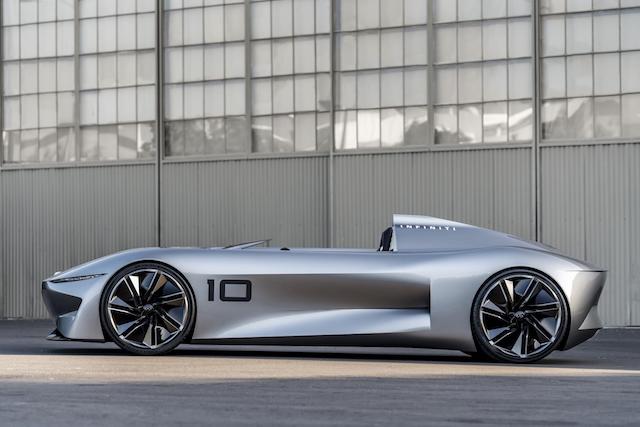
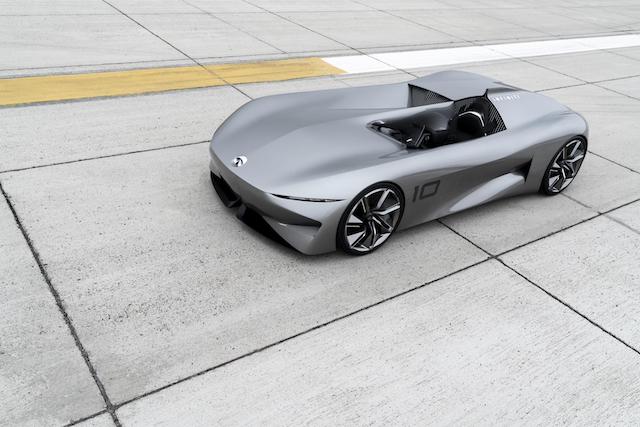
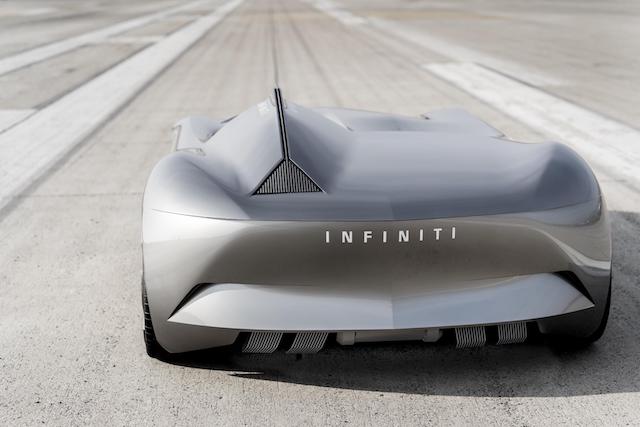
Looking out on the morning rain
I used to feel so uninspired
And when I knew I had to face another day
Lord, it made me feel so tired.
- Rock Steady, Aretha...
(8/22)


 From the "Greed Is Good" File. Editor-in-Chief's Note: Having observed - somewhat reluctantly - portions of the auto auction circus from Monterey, it struck me, yet again, that some of the people out there in the so-called auto "hobby" have lost their frickin' minds. I have been admonished time and again that my railings against the greed-fest that defines the auto auction game are a waste of time, because it's an inexorable part of the hobby now and there's not a damn thing that can be done about it. Perhaps that's so, but it doesn't make it right and it doesn't make it worthy of praise, either. The prices paid for some of the cars that trundled over the auction stages went beyond stupefying to just flat-out stupid. I am not going to regurgitate all of the egregious outrageousness, because it would fill up this entire issue, but in particular, the overinflated prices for recent and older "super" cars defied all rational thinking, including $467,500 for a wrecked Porsche 959. Or the six-figure prices for VW buses. Or the continued ridiculousness of air-cooled Porsche prices, including over $1 million for a 1973 Porsche 911 RS. Or, the biggest number of the weekend, $48,000,000 - including fees - for one of the original Ferrari GTOs. Now I get the fact that there were only 35 built, but what exactly does one do with a $48 million dollar Ferrari other than put it in the garage and pay insurance on it? I also get the fact that the motivation to acquire stuff when you have boatloads of cash is a powerful thing, but $48 million? C'mon, man! I now view the whole auction craze as the toxic underbelly of the car "hobby." And please spare me the argument that the auction game does so much for charity, because the auction houses use the charity angle as cover for the hyperinflated prices that they relentlessly push on people. This whole auction "thing" is going nowhere good - I've seen this movie before and it never ends well. I applaud the enthusiasts who acquire their cars for the right reasons, which is to enjoy them and drive them. The rest of what's going on is just so much unmitigated bullshit. -PMD (8/29)
From the "Greed Is Good" File. Editor-in-Chief's Note: Having observed - somewhat reluctantly - portions of the auto auction circus from Monterey, it struck me, yet again, that some of the people out there in the so-called auto "hobby" have lost their frickin' minds. I have been admonished time and again that my railings against the greed-fest that defines the auto auction game are a waste of time, because it's an inexorable part of the hobby now and there's not a damn thing that can be done about it. Perhaps that's so, but it doesn't make it right and it doesn't make it worthy of praise, either. The prices paid for some of the cars that trundled over the auction stages went beyond stupefying to just flat-out stupid. I am not going to regurgitate all of the egregious outrageousness, because it would fill up this entire issue, but in particular, the overinflated prices for recent and older "super" cars defied all rational thinking, including $467,500 for a wrecked Porsche 959. Or the six-figure prices for VW buses. Or the continued ridiculousness of air-cooled Porsche prices, including over $1 million for a 1973 Porsche 911 RS. Or, the biggest number of the weekend, $48,000,000 - including fees - for one of the original Ferrari GTOs. Now I get the fact that there were only 35 built, but what exactly does one do with a $48 million dollar Ferrari other than put it in the garage and pay insurance on it? I also get the fact that the motivation to acquire stuff when you have boatloads of cash is a powerful thing, but $48 million? C'mon, man! I now view the whole auction craze as the toxic underbelly of the car "hobby." And please spare me the argument that the auction game does so much for charity, because the auction houses use the charity angle as cover for the hyperinflated prices that they relentlessly push on people. This whole auction "thing" is going nowhere good - I've seen this movie before and it never ends well. I applaud the enthusiasts who acquire their cars for the right reasons, which is to enjoy them and drive them. The rest of what's going on is just so much unmitigated bullshit. -PMD (8/29)
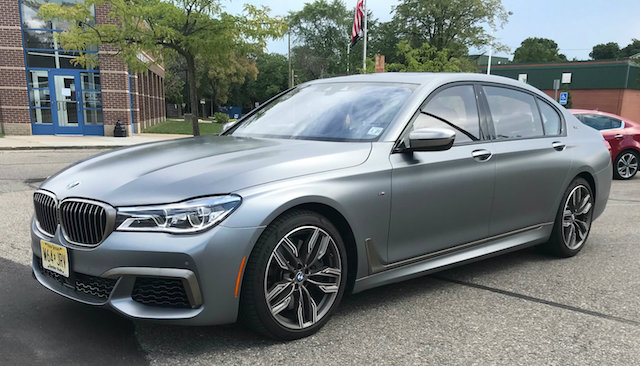
Let me be right up front about the BMW M760i xDrive Sedan: it is a 206.6" long, 74.9" wide, 58.2", 5,128-lb. monster. I wouldn't call it sleek, necessarily, but it is definitely imposing in its matte "Frozen Gray Metallic" finish. (I have to say that the whole matte finish look had a shelf life of, oh, about five minutes. Now it looks dated and just... unfinished. I am not a fan of it, at all.) This particular test car had the stunning "Tartufo" Full Merino leather, however, which is simply stunning. It's actually hard to write comments about a machine like this. After all, I didn't have to come up with the price of entry for my week with it, I just had to put gas in it. Lots of gas. So, suspending reality for a moment; if you had the dough-re-mi for a car like this, is this the machine you'd tell your Admin to send a check to the dealer for, so they could deliver it to the office? After all, forgetting the sports car options available, as far as big, heavy, expensive machines go you could get into a AMG GLE S 63 Coupe or AMG S 63 sedan, or a full-zoot Panamera Turbo, or a Range Rover SVAutobiography, etc. But even if price didn't matter, is this what you'd choose? I can tell you that trundling around the local landscape with this beast is a giant waste; it's no more suited to the urban slog than doing Saturday errands in a Escalade ESV is. Now, getting out on the open road and engaging the sport setting on the gearbox is a different story altogether. BMW says the M760i xDrive goes 0 to 60 mph in 3.6 seconds and I don't doubt that figure for a moment, because the beast flat-out gets it when you put your foot into that magnificent V12. And I do mean magnificent. In fact, it transforms itself into another automotive being completely, so if you have to have that component in your street car but you like big then this machine should be on your list. Yes, it's just jam-packed with technological overkill, which is now obligatory in expensive cars these days, but I guess if you wanted to go all minimalist in your daily driver you wouldn't give this car a second look anyway. When I get these test cars I don't explore the technology available because I am just not into it, I am more interested in the machine itself and the way it drives. I experienced the Active Cruise Control, however, and that was more than enough for me. I found it to be terribly annoying and the antithesis to alert, engaged driving. If you're a mediocre driver who finds the whole act of driving boring, then maybe this feature would be a godsend; but if you give a shit about driving I guarantee this active cruise control would piss you off in about a minute. Regular old cruise control is fine, thank you very much. Is this the car I would lust after if I could afford one? No. But I appreciate the engineering effort that went into it, especially when you put it in sport and drive it as a high-performance sedan. -PMD (9/5)
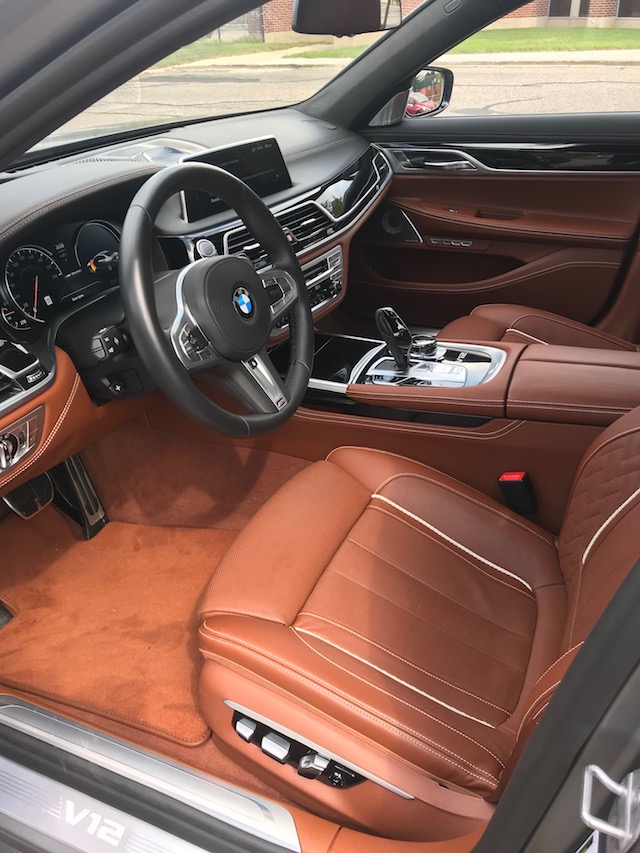

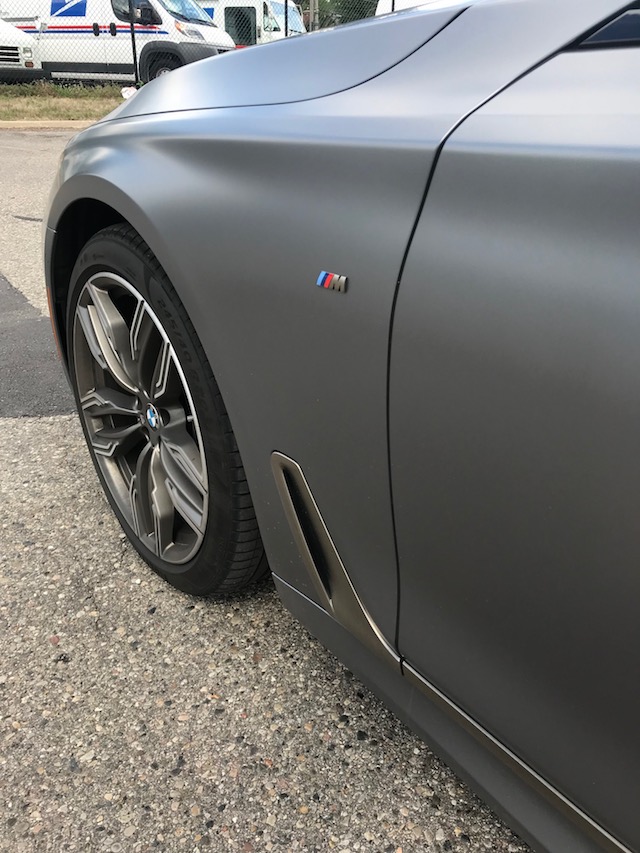
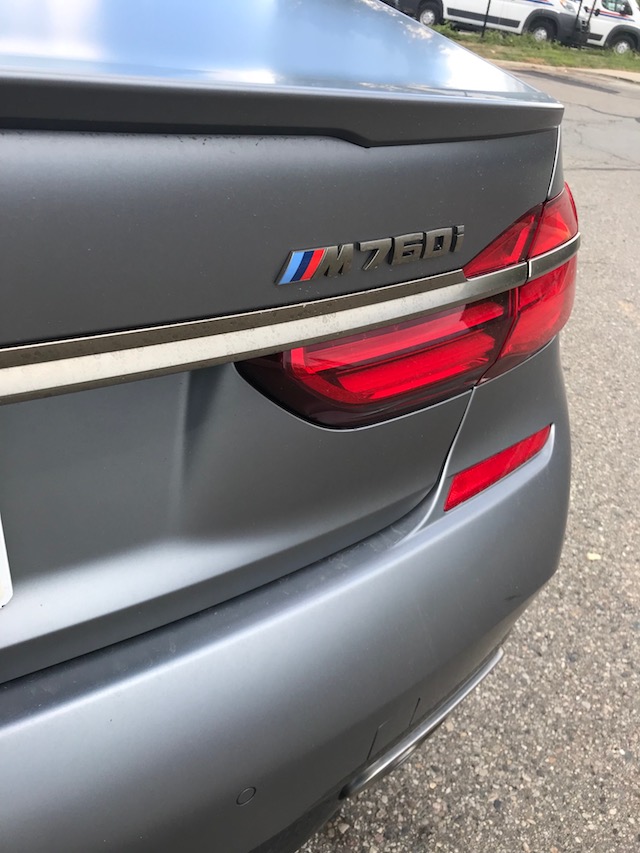 2018 BMW M760i xDrive Sedan: $181,075 ($156,700 Base Price; Frozen Gray Metallic, $5200; Tartufo Full Merino Leather, $4000; 6.6-liter, BMW M Performance TwinPower Turbo 48-valve V12 engine with variable valve control (Double-VANOS and Valvetronic) and high-precision direct injection; 601HP@5500 rpm and 590 lbs-ft of torque; M Sport exhaust system with Cerium Gray twin tailpipe embellishers; 8-speed STEPTRONIC transmission; Driving Dynamics Control with ECO PRO, ADAPTIVE, COMFORT, COMFORT+, SPORT and SPORT+ modes; 4-wheel, ventilated, anti-lock disc brakes with ABS; Dynamic Stability Control (DSC) including Brake Fade Compensation, Start-off Assistant, Brake Drying, Brake Stand-by features with Dynamic Traction Control (DTC); xDrive all-wheel-drive system; 20" M Style 760M wheels (20" X 8" front, 20" X 10" rear); Icon Adaptive full LED headlights; Cerium gray accent features; M rear spoiler; Power-folding heated side mirrors; 20-way power Multi Contour front seats with 4-way lumbar support and front seat memory; Nappa leather front and rear heated and ventilated seats, Harman Kardon Surround Sound Audio System with HD radio; SiriusXM Satellite Radio with 1-year all access subscription; iDrive 5.0 system with touchscreen, touchpad controller and seven programmable memory buttons; BMW Navigation system with 10.2" high-resolution screen, Voice command system, and Advanced Real Time Traffic information; Gesture control; Full-color head-up display; Comfort Access keyless entry and soft-close automatic doors; Panoramic moonroof; Park Distance Control, front and rear; Surround View Camera; Active Driving Assistant and Active Parking Assistant; Driving Assistance Plus Package - Active Driving Assistance Plus, Active Cruise Control with Stop & Go, Active Lane Assistant with Side Collision Avoidance, Traffic Jam Assistant - $1700; Luxury Rear Seating Package - Heated seats and armrests with rear massaging seats - $1800; Piano Finish Black Trim, $1080; Ambient Air Package, $350; Panoramic Sky Lounge LED Roof, $900; Adaptive Full LED lights, $550; Rear Seat Entertainment, $2700; Bowers & Wilkins Sound System, $3400; Destination charge, $995; Gas Guzzler Tax, $1700)
2018 BMW M760i xDrive Sedan: $181,075 ($156,700 Base Price; Frozen Gray Metallic, $5200; Tartufo Full Merino Leather, $4000; 6.6-liter, BMW M Performance TwinPower Turbo 48-valve V12 engine with variable valve control (Double-VANOS and Valvetronic) and high-precision direct injection; 601HP@5500 rpm and 590 lbs-ft of torque; M Sport exhaust system with Cerium Gray twin tailpipe embellishers; 8-speed STEPTRONIC transmission; Driving Dynamics Control with ECO PRO, ADAPTIVE, COMFORT, COMFORT+, SPORT and SPORT+ modes; 4-wheel, ventilated, anti-lock disc brakes with ABS; Dynamic Stability Control (DSC) including Brake Fade Compensation, Start-off Assistant, Brake Drying, Brake Stand-by features with Dynamic Traction Control (DTC); xDrive all-wheel-drive system; 20" M Style 760M wheels (20" X 8" front, 20" X 10" rear); Icon Adaptive full LED headlights; Cerium gray accent features; M rear spoiler; Power-folding heated side mirrors; 20-way power Multi Contour front seats with 4-way lumbar support and front seat memory; Nappa leather front and rear heated and ventilated seats, Harman Kardon Surround Sound Audio System with HD radio; SiriusXM Satellite Radio with 1-year all access subscription; iDrive 5.0 system with touchscreen, touchpad controller and seven programmable memory buttons; BMW Navigation system with 10.2" high-resolution screen, Voice command system, and Advanced Real Time Traffic information; Gesture control; Full-color head-up display; Comfort Access keyless entry and soft-close automatic doors; Panoramic moonroof; Park Distance Control, front and rear; Surround View Camera; Active Driving Assistant and Active Parking Assistant; Driving Assistance Plus Package - Active Driving Assistance Plus, Active Cruise Control with Stop & Go, Active Lane Assistant with Side Collision Avoidance, Traffic Jam Assistant - $1700; Luxury Rear Seating Package - Heated seats and armrests with rear massaging seats - $1800; Piano Finish Black Trim, $1080; Ambient Air Package, $350; Panoramic Sky Lounge LED Roof, $900; Adaptive Full LED lights, $550; Rear Seat Entertainment, $2700; Bowers & Wilkins Sound System, $3400; Destination charge, $995; Gas Guzzler Tax, $1700)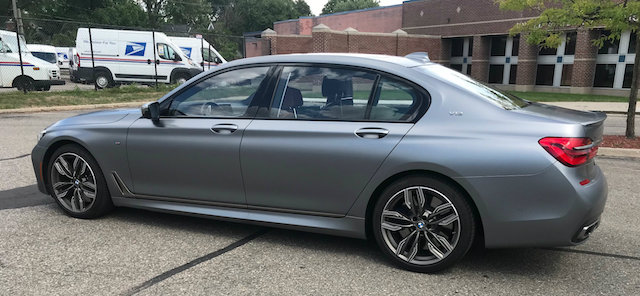

Ferrari announced the Monza SP1 and Monza SP2 - their latest cash generating machines - the first two models in a new ‘Icone’ series of limited-run collector’s specials. Using the 6.5-liter V12 from the 812 Superfast (now with 810HP), the open-air speedsters are inspired by Ferrari's 750 Monza and 860 Monza open-cockpit endurance racers of the mid-1950s. Devoid of full windscreens, the only difference between the Monza SP1 and Monza SP2 is the number of seats. The SP1 bodywork encloses the driver’s seat for slightly lower weight and even lower drag. Ferrari will build less than 500 of these already sold-out machines. (9/19)
 1956 Ferrari 860 Monza.
1956 Ferrari 860 Monza.



Well, that was special. Cadillac announced it was moving its headquarters back to Detroit from New York. (Actually, it moved into the old Campbell-Ewald advertising building in Warren, across from the GM Tech Center.) As I have written in this space and in my columns many, many times over the last four years, the idea of moving the brand to New York made sense on one level in that Cadillac's intent was to become its own individual entity as a luxury brand, completely separate from GM's headquarters hard by the Detroit River. And even though that sounded good, the reality was that Cadillac executives based in New York were spending three weeks out of a typical month in Detroit, if not more. It just wasn't working. I suggested not long after the move was made that if I were running Cadillac, I wouldn't want the headquarters to be more than 45 driving minutes from the GM Milford Proving Grounds or the GM Technical Center in Warren, and that there were plenty of nice, abandoned warehouse spaces in this city that could be renovated into fitting quarters for GM's luxury brand. And so here we are. After spending millions upon millions to make a splash in New York, Cadillac is moving back here, right where it belonged all along. -PMD (9/26)


 BBDO. Editor-in-Chief's Note: From the "Be Careful What You Wish For" File, Ford made its new global marketing plans official. BBDO is its new global creative advertising agency; Wieden + Kennedy will be "a creative and innovation partner" for specific projects; and WPP, the former lead agency, gets hosed, continuing to lead activation for Ford – including media planning, media buying, shopper and performance marketing, website development, customer relationship marketing, as well as multicultural and Tier 2 dealer advertising. The company says that this will yield more creativity, be more agile and efficient, while delivering a more compelling brand story and differentiated customer experiences (WPP will keep the Lincoln work). Oh, and by the way, it will result in $150 million in annual efficiencies, which is one of two reasons behind this move. The other reason is that Ford's Grand Poobah of marketing - Jim "I'm a genius just ask me" Farley - has had it out for WPP for going on five years now and whatever Farley wants he gets, to the company's detriment, unfortunately. My message to BBDO - one of my former ad alma maters - is this: Be careful what you wish for, because getting sucked into the swirling maelstrom that is part and parcel of Ford marketing will suck the very life out of you in no time. And remember, whatever has been promised going in is a false fantasy. It will start out well and probably be okay for a while, but then the reality of dealing with Farley on a regular basis will sink in and you will rue the day you ever got involved. Normally I'd say "good luck, you'll need it" but luck has nothing to do with it, unfortunately. Instead, welcome to Life in Hell, ladies and gentlemen. -PMD (10/10)
BBDO. Editor-in-Chief's Note: From the "Be Careful What You Wish For" File, Ford made its new global marketing plans official. BBDO is its new global creative advertising agency; Wieden + Kennedy will be "a creative and innovation partner" for specific projects; and WPP, the former lead agency, gets hosed, continuing to lead activation for Ford – including media planning, media buying, shopper and performance marketing, website development, customer relationship marketing, as well as multicultural and Tier 2 dealer advertising. The company says that this will yield more creativity, be more agile and efficient, while delivering a more compelling brand story and differentiated customer experiences (WPP will keep the Lincoln work). Oh, and by the way, it will result in $150 million in annual efficiencies, which is one of two reasons behind this move. The other reason is that Ford's Grand Poobah of marketing - Jim "I'm a genius just ask me" Farley - has had it out for WPP for going on five years now and whatever Farley wants he gets, to the company's detriment, unfortunately. My message to BBDO - one of my former ad alma maters - is this: Be careful what you wish for, because getting sucked into the swirling maelstrom that is part and parcel of Ford marketing will suck the very life out of you in no time. And remember, whatever has been promised going in is a false fantasy. It will start out well and probably be okay for a while, but then the reality of dealing with Farley on a regular basis will sink in and you will rue the day you ever got involved. Normally I'd say "good luck, you'll need it" but luck has nothing to do with it, unfortunately. Instead, welcome to Life in Hell, ladies and gentlemen. -PMD (10/10)

The newest crate engines from Chevrolet Performance went on display at the SEMA Show in a trio of vintage vehicles that showcased the installation possibilities for builders. The lineup included a 1973 Chevelle Laguna with the all-new LT5 6.2L supercharged crate engine, a 1967 C/10 with the all-new ZZ6 EFI 5.7L V-8 crate engine, and a 1978 Silverado with the L96 6.0L V-8 crate engine. The Chevelle Laguna features the new LT5 6.2L supercharged crate engine. It’s based on the engine that drives that Corvette ZR1 and is the most powerful production engine ever from Chevrolet, rated at 755 horsepower and 715 lb.-ft. of torque. Chevrolet designers adapted the production ZR1’s carbon fiber hood styling on the Laguna, in a nod to the propulsion system, along with front and rear spoilers that pay homage to the NASCAR racecars of the Seventies. The car rides on a modified suspension and 18-inch wheels. (10/17)


 Ford Marketing. Editors' Note: Living in a company town such as this one, whenever a big marketing play from one of the car companies is at hand, local journalists are summoned to headquarters, or in the case of Ford's "Built Ford Proud" invited to the dealer meeting in Las Vegas so they could bask in the glow of the goings-on and hopefully, witness the thunderous approval of the campaign by the dealers and associated hangers-on. We have assembled some random quotes from Automotive News and the Detroit Free Press - with our comments - to give you an idea of how this stuff plays out. "The company's got its swagger back," Jim Farley, Ford Motor Co.'s president of global markets, told reporters in Las Vegas. "We think customers are ready to hear directly from a company that says, 'Here's what we're about, this is what makes us different, and we hope you like it.' " The spot is, indeed, conflicted. Ford is trying to be in the here and now and be a player in the future, yet there is Bryan Cranston making fun of companies that talk about the future, which is exactly what Ford has been doing under Hackett's reign for months. And then going after Tesla by countering that there's a Ford Escape in two million garages doesn't make a lick of sense, either. Uh, which looks cooler, the Tesla model S or the Escape? It doesn't matter what the reality is, people think Tesla is cooler/hotter/happening, much to everyone's chagrin in Detroit. "They found a great voice for what we already knew was our voice," Farley continued. "I don't know why we weren't talking that way before. It really had emotional resonance I haven't seen." Really? Resonance for Ford executives, employees and the dealers, maybe, but the wider audience out in the world? As we said, a giant "we'll see." "I think he really captures that no-baloney, real honesty that frankly we don't hear much of anymore," Farley said. "We really wanted to have a theme that ties the whole lineup together." Really, Part II? Now this is flat-out unmitigated bullshit from Jim "I'm a genius just ask me" Farley. This is fucking advertising, lest anyone forget. Plus, this is a theme that ties everything together when "Go Further" and "Built Ford Tough" are still out in the atmosphere? So, which is it? And the print ads? They say: Born in Detroit. Made in America. Famous worldwide. Talk about Lame-O. This is like every other product/company trying to capitalize on the "revitalized" Motor City bandwagon that keeps chugging away. And we like the quoted "ad professionals" in the Free Press praising the campaign while making too much of a deal about the transition from "tough" to "proud." This is just Ford marketers talking to themselves with "promises to lift up downtrodden employees" - and that's it exactly. More from the Freep: "Ford executives cite surveys that reinforce the idea that the iconic automaker is one of the most trusted companies in America. At issue, though, is whether that trust is eroding." It isn't about a lack of trust for Ford, it's about a lack of market resonance beyond Ford's loyal customers. Once Ford gets away from the friendly confines of its customer base, it tends to all turn to shit for the company. And finally, Joy Falotico, Ford group vice president and chief marketing officer, said in a statement: "Every Ford employee I know comes to work each day proud to drive a Ford vehicle and to build great products, services and experiences for our customers." Well, good for you, but last time we checked this doesn't exactly constitute a brand strategy. As this week's Rant points out, this campaign is a glorified internal rallying cry, and that's pretty much it. And Farley suggesting that they've finally "got their swagger back" is the epitome of Ford talking to themselves. "Swagger" is not exactly what's needed from Ford right now; good products are, with a meaningful product cadence that makes sense. The Bronco is three years late, and that is simply inexplicable and inexcusable. Besides, talking about "swagger" sounds like tired frat-boy shit to us. We're quite sure the dealer audience (and top Ford execs) now think they've got it goin' on, because at least Cranston gives them a bit of attitude. But for the general public who is supposed to put Ford on a shopping list, or even consider them a player in the future space? We're just. Not. Sure. -PMD and WG. (10/24)
Ford Marketing. Editors' Note: Living in a company town such as this one, whenever a big marketing play from one of the car companies is at hand, local journalists are summoned to headquarters, or in the case of Ford's "Built Ford Proud" invited to the dealer meeting in Las Vegas so they could bask in the glow of the goings-on and hopefully, witness the thunderous approval of the campaign by the dealers and associated hangers-on. We have assembled some random quotes from Automotive News and the Detroit Free Press - with our comments - to give you an idea of how this stuff plays out. "The company's got its swagger back," Jim Farley, Ford Motor Co.'s president of global markets, told reporters in Las Vegas. "We think customers are ready to hear directly from a company that says, 'Here's what we're about, this is what makes us different, and we hope you like it.' " The spot is, indeed, conflicted. Ford is trying to be in the here and now and be a player in the future, yet there is Bryan Cranston making fun of companies that talk about the future, which is exactly what Ford has been doing under Hackett's reign for months. And then going after Tesla by countering that there's a Ford Escape in two million garages doesn't make a lick of sense, either. Uh, which looks cooler, the Tesla model S or the Escape? It doesn't matter what the reality is, people think Tesla is cooler/hotter/happening, much to everyone's chagrin in Detroit. "They found a great voice for what we already knew was our voice," Farley continued. "I don't know why we weren't talking that way before. It really had emotional resonance I haven't seen." Really? Resonance for Ford executives, employees and the dealers, maybe, but the wider audience out in the world? As we said, a giant "we'll see." "I think he really captures that no-baloney, real honesty that frankly we don't hear much of anymore," Farley said. "We really wanted to have a theme that ties the whole lineup together." Really, Part II? Now this is flat-out unmitigated bullshit from Jim "I'm a genius just ask me" Farley. This is fucking advertising, lest anyone forget. Plus, this is a theme that ties everything together when "Go Further" and "Built Ford Tough" are still out in the atmosphere? So, which is it? And the print ads? They say: Born in Detroit. Made in America. Famous worldwide. Talk about Lame-O. This is like every other product/company trying to capitalize on the "revitalized" Motor City bandwagon that keeps chugging away. And we like the quoted "ad professionals" in the Free Press praising the campaign while making too much of a deal about the transition from "tough" to "proud." This is just Ford marketers talking to themselves with "promises to lift up downtrodden employees" - and that's it exactly. More from the Freep: "Ford executives cite surveys that reinforce the idea that the iconic automaker is one of the most trusted companies in America. At issue, though, is whether that trust is eroding." It isn't about a lack of trust for Ford, it's about a lack of market resonance beyond Ford's loyal customers. Once Ford gets away from the friendly confines of its customer base, it tends to all turn to shit for the company. And finally, Joy Falotico, Ford group vice president and chief marketing officer, said in a statement: "Every Ford employee I know comes to work each day proud to drive a Ford vehicle and to build great products, services and experiences for our customers." Well, good for you, but last time we checked this doesn't exactly constitute a brand strategy. As this week's Rant points out, this campaign is a glorified internal rallying cry, and that's pretty much it. And Farley suggesting that they've finally "got their swagger back" is the epitome of Ford talking to themselves. "Swagger" is not exactly what's needed from Ford right now; good products are, with a meaningful product cadence that makes sense. The Bronco is three years late, and that is simply inexplicable and inexcusable. Besides, talking about "swagger" sounds like tired frat-boy shit to us. We're quite sure the dealer audience (and top Ford execs) now think they've got it goin' on, because at least Cranston gives them a bit of attitude. But for the general public who is supposed to put Ford on a shopping list, or even consider them a player in the future space? We're just. Not. Sure. -PMD and WG. (10/24)
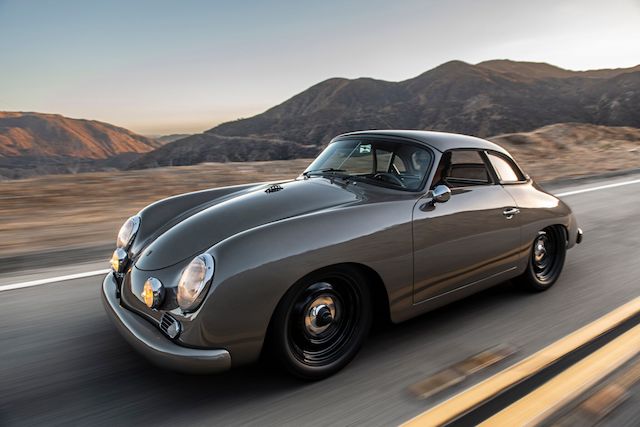
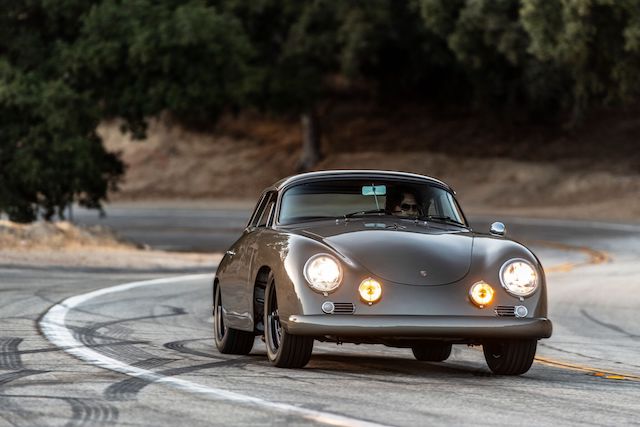 Power is supplied by the new Emory-Rothsport “Outlaw-4” engine. Emory collaborated with Porsche GT racing team crew chief Jeff Gamroth of Rothsport Racing to create an all-new air-cooled four-cylinder engine block, based on the dry-sump Porsche 3.6L Type 964 engine. Custom cam housings, camshafts, and crankshafts are designed to work with OE Porsche engine components. Chassis modernizing was also part of the plan. Emory adapted early Porsche 911 independent rear suspension with custom-narrowed trailing arms. Adjustable Koni shocks control the ride. Handling is improved with a proprietary Emory four-wheel disc-brake system, which stops the 205/55ZR16 Pirelli P Zero Rosso tires on custom 15x6 billet alloy wheels. The wheels were powder-coated black and have mirror-polished hubs.
Power is supplied by the new Emory-Rothsport “Outlaw-4” engine. Emory collaborated with Porsche GT racing team crew chief Jeff Gamroth of Rothsport Racing to create an all-new air-cooled four-cylinder engine block, based on the dry-sump Porsche 3.6L Type 964 engine. Custom cam housings, camshafts, and crankshafts are designed to work with OE Porsche engine components. Chassis modernizing was also part of the plan. Emory adapted early Porsche 911 independent rear suspension with custom-narrowed trailing arms. Adjustable Koni shocks control the ride. Handling is improved with a proprietary Emory four-wheel disc-brake system, which stops the 205/55ZR16 Pirelli P Zero Rosso tires on custom 15x6 billet alloy wheels. The wheels were powder-coated black and have mirror-polished hubs. 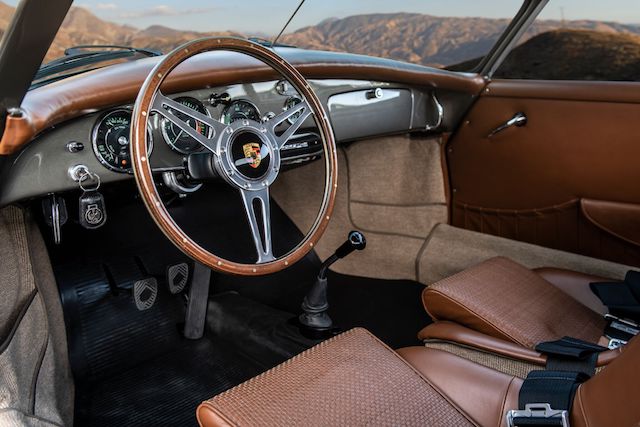 John Oates worked directly with Rod Emory to map out the interior cabin. Hydes cognac leather is showcased throughout. The Speedster-style seats received basket-weave inserts. German square-weave carpet in is augmented by traditional rubber floor mats. A removable roll bar was added in case Oates decides to track his 356.
John Oates worked directly with Rod Emory to map out the interior cabin. Hydes cognac leather is showcased throughout. The Speedster-style seats received basket-weave inserts. German square-weave carpet in is augmented by traditional rubber floor mats. A removable roll bar was added in case Oates decides to track his 356.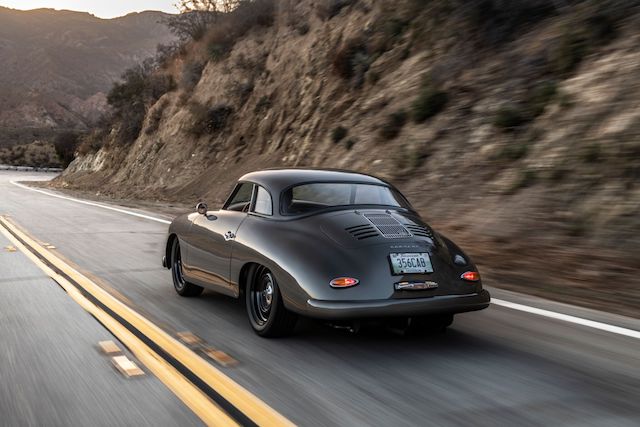
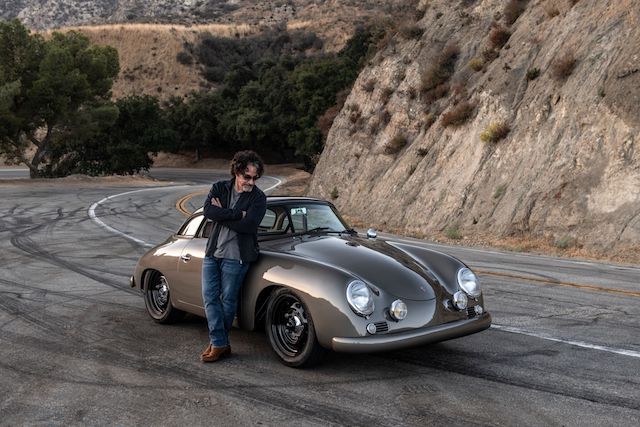
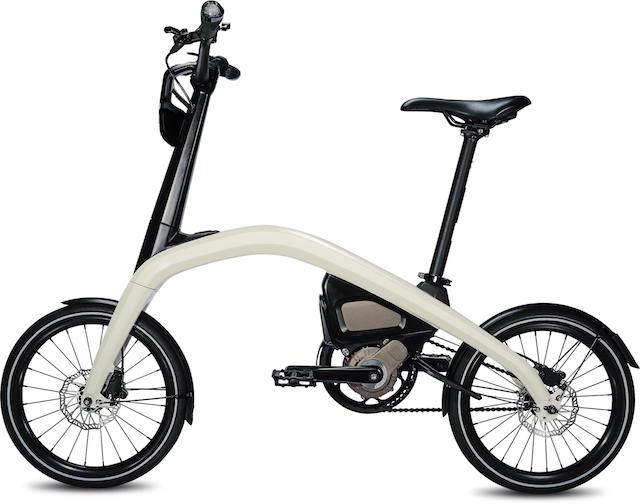
General Motors has revealed two connected eBikes – one folding and one compact – without a brand. GM asked enthusiasts from around the globe to help name its eBike brand using www.eBikeBrandChallenge.com. The challenge participant responsible for the selected eBike brand name received $10,000 and nine other participants responsible for runner-up submissions each received $1,000. GM said it was looking for simple, smart and bold concepts capable of bringing the eBike brand to life, "Fun ideas capable of being understood around the world," said GM's PR minions. GM will announce the winners in early 2019. We had a few thoughts, as you might imagine: "STICK" (As in we're throwin' shit up against the wall to see what sticks.) "CYA" (As in we've got this mobility thing - and our asses - covered.) "SHINY" (Shiny, happy ebikes for shiny, happy people.) "WEE!" (As in the sound you'll make riding on slush-filled roads in the dead of winter.) "WOE" (As in we've been reduced to building transportation for a world of reduced expectations.) "LINGUIN-E" (As in, if you hate your miserable life, you can at least still go through the drive-thru pasta stand) -PMD & WG (11/17)
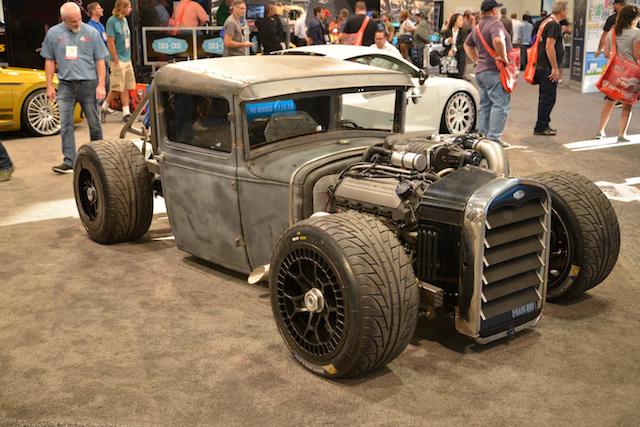
One of our favorites from the SEMA Show. (11/7)
Alfa Romeo Stelvio Update. Editor-in-Chief's Note: The miles have been coming a little slowly on the Stelvio at just over 6,000 at this point, but the characteristics that are so pleasing about the car remain strong. Not to beat this to death, but the way the Stelvio drives and the way it feels remain the main attraction for me. Having spent a fair amount of time in a second-generation standard Porsche Cayenne a while back, which was ponderous, sluggish and underpowered, the Stelvio is lively and light on its feet to the point that you feel like you're driving a sport sedan with a little extra ground clearance, which is exactly what it is. The fact that it's based on the Giulia architecture means that the Stelvio is a star on the road, and I just can't stress that enough. Another strength is the Stelvio's exterior and interior design. I still get unsolicited comments from people at gas station stops for instance, and they're all positive about the look of it. And I concur, because the Alfa designers got it right. Plus the interior is simple and tasteful in its design, and the harman kardon audio system is terrific, with excellent overall sound quality. My biggest criticism of the vehicle remains the cheap feel of the shifter. I've gotten used to it by now, but that's something that the True Believers at Alfa Romeo need to address first and foremost. Add to all of this the fact that the Stelvio shares similar positive attributes with the Crossover/SUV genre, meaning that is is easy to get in and out of and offers utility and versatility for the day-to-day of life, and you have a winning combination. Problems? I have had two recalls on the Stelvio, both involving re-flashes of the computer that each took less than one hour, start to finish. And I must say that my local dealer - Golling Alfa Romeo - performed these adjustments efficiently and professionally. So, here we are. After seven months I can say that the Alfa Romeo Stelvio was worth taking a chance on, and I am still very pleased with it. -PMD (11/14)
Editor's Note: AE had the chance earlier this month to attend the Financial Times' Future of the Car Summit in Detroit. We sent our favorite researcher and consumer strategist, Allen Bukoff, to check it out. Here is his report. -WG
Financial Times’ Future of the Car Summit, Detroit, November 8, 2018
By Allen Bukoff, PhD
Detroit. There probably has never been a time in the auto industry when so many different major forces for change have been swirling around and through it. This has created two major intellectual challenges: 1. understanding each of these forces and how they are likely to work together and 2. developing a broader view about what is going to be affected. Most people, even in the auto industry, are still treating what’s going on with electric vehicles, for example, as being just a product variation of the traditional automobile, when what’s going on is a whole lot bigger than that – a new product category that is bringing a new transportation revolution with it. Thankfully, conferences like Financial Times’ Future of the Car Summit are pushing the broader, deeper view.
Attending this conference gave us the opportunity to assess where there is (and is not) some consensus about the future of transportation.
Consensus about the major forces we are dealing with
-
the rise of EVs (all-electric vehicles)
-
the rise of AVs (autonomous vehicles) – sensors and artificial intelligence
-
the expansion and evolution of Transportation as a Service (e.g., “e-hailing,” Uber, Lyft, and Maven)
-
the growth and expansion of Connectivity (the digital infrastructure making AVs and Transportation as a Service viable)
-
the Global Scope – all of these forces are playing out on a global stage
| [Author’s note: The best and deepest exploration and projection that we’ve seen about how these forces are rapidly coming together (often multiplying each other’s effect!) is still the 2017 RethinkX report (free to download here ). Nearly everything we heard at the Future of the Car Summit aligned with the overall RethinkX analysis, although not with the aggressiveness of its timetable.] |
Consensus about the scope of what is going to be effected:
On top of the intellectual challenge of getting our brains and our planning around the unprecedented confluence of these major forces is the challenge of widening our vision about the scope of what is being affected (it’s more than just the auto industry and it’s happening on a global scale!):
-
Human mobility and transport. The confluence of these major forces is prompting a broad reconsideration of human mobility and transport and challenging all the players to take a broader view that encompasses private, commercial, and public transportation, “micromobility” (e,g., scooters, ebikes), e-hailing and Transportation as a Service, all supported by an increasing use of connectivity, data, and software.
-
Product disruption. Moving from ICE vehicles (for the last 100 years) to EVs to EV-AVs; from personal vehicles to shared-vehicle fleets.
-
Business-model disruption. You’re not just in the car business anymore! From OEMs and dealers, to transportation providers and OEMs; from commercial drivers to driverless delivery vehicles.
-
Lifestyle disruption. This is going to change how many of us have been living (e.g., small private vehicle fleets and a greater use of transportation services), and give new, better, and more affordable transportation options to billions of people who have few options now.
-
Urban disruption. Some of the future scenarios predict increased congestion requiring government intervention and regulation. Other scenarios predict major improvements in urban living and mobility. City planners around the world are watching.
OTHER TAKEAWAYS FROM THE SUMMIT
It’s not about the environment, it’s the economics. Many people still think that the push for electric vehicles is being driven by environmental concerns such as the growing threat of climate change. Although passenger vehicles and heavy-duty trucks are a major source of air pollution and climate change, the environmental benefits are not the main factor driving the push to EVs, AVs, and Transportation as a Service. Economics is the real driver. Electric vehicles are mechanically simpler, easier, and cheaper to build and maintain (electric motors have many fewer parts than internal combustion engines). Electricity can be managed and used much more efficiently than burning petroleum. Electricity can be generated from solar and wind power. The main stickler with EVs has been the cost and capacity/range of the batteries. The batteries are by far the costliest component of current EVs. But the price of batteries is coming down at the same time that the capacity/range is going up. Everyone is now projecting that even without any major new breaththroughs in battery technology, EVs will be cheaper to manufacture (and buy!) than the equivalent ICE vehicle. There doesn’t appear to be a strong consensus yet on when this cost tipping-point is likely to happen, but it’s a lot sooner than anyone was thinking even five years ago. This is why so many analysts have become so bullish on EVs. They appear to be economically inevitable. Consumers and fleet owners ARE going to be buying EVs because they are cheaper to buy, cheaper to run (an electric mile is much cheaper than a gasoline or diesel mile), and cheaper to maintain (fewer parts, longer lasting, no oil changes, etc.). The push to autonomous vehicles is also being driven by economics: remove the human driver from an Uber or Lyft and you’ve got a major drop in the cost of providing transportation. If AVs can be developed to be much safer than human drivers, insurance costs will fall as well.
Public-charging infrastructure. Before the Chevrolet Volt and Tesla Model S were introduced, the reigning conventional wisdom was that EVs would never be feasible – would never take off – until there was a large nationwide infrastructure of public charging stations. You wouldn’t be able to use an EV for daily driving unless there was a public charging station at work, at the grocery store, and at frequent locations along our major interstates and highways. The Volt cleverly eliminated the constraint of limited battery range by adding an onboard gas-powered electric generator as backup, and the Tesla Model S challenged it from the beginning with a 208 mile range (now up to 335). Charging your EV only at home has been good enough to make the latest EVs feasible daily drivers for tens of thousands of consumers.
Nevertheless, the belief persists among the non-EV-owning public that the lack of out-of-home charging infrastructure is a serious problem and is cited as a major reason deterring them from considering an EV at this time. Tesla continues to expand its Supercharging Network nationally between key cities (e.g., Los Angeles and San Francisco) to support long-distance trips by Tesla owners. A variety of other companies are also busy installing public charging infrastructure (the VW-funded Electrify America has begun installing charging stations at Walmarts). If you go to one of the websites that shows public charging stations (e.g.,PlugInAmerica, PlugShare), you’ll probably be surprised at how many EV charging stations are already available in and around your metro area. The time it takes to charge an EV is also coming down dramatically. Charging stations that can give you 20 miles of range for a three-minute charge (200 miles for a half-hour charge) are on their way. Given how easy it is to charge at home, how few long distance roadtrips most people take, and the growing availability of charging stations, there doesn’t seem to be consensus yet on how close or faraway we are from having “enough” public-charging infrastructure.
The Speed of Adoption -- Consumers and the Push/Pull Puzzle. There seems to be more contradiction than consensus about the role that automotive consumers are playing, should play, and will play in the adoption of EVs, AVs, and Transportation as a Service. Some are just expecting consumers to muddle through all these changes just fine and others are worried that consumers are going to need much more assistance -- education and guidance (including incentives?) -- to get up to speed and to navigate well in this new terrain.
On the one hand we have the traditional free-market faith that individual consumers will seek out information and rationally weigh all the costs and benefits against their needs and resources, and that this will properly guide the market and shape the future. But EVs, AVs, and the variety of transportation services that the future is bringing are a bigger challenge than your average automotive consumer has ever experienced (and most consumers and automotive marketers don’t seem to have realized this yet). EVs themselves (let alone AVs and Transportation as a Service options) are confronting consumers with a new and unknown product category and user experience.
The consumers who have already made the leap almost universally love their EVs and their EV experience (and say their next vehicle will also be an EV). Everyone else seems to be wary, put off by some of the “negatives” they’ve heard about, many of which – like limited range, slow charging, lack of public charging stations, and vehicle cost – are increasingly inaccurate exaggerations. They either haven’t heard about the enthusiasm EV owners have, or they are suspicious that these are just environmental and techno extremists.
The large gap between EV owner experience and public caution (resistance?) suggests that owning an EV vehicle may actually be a better and more practical consumer experience than what is currently commonly believed. If this is true, there are two ways that more people will get over this gap: 1. they’ll take a small leap of faith into EV driving (when everyone else is switching to EVs), and it’s the cool thing to do or 2. they’ll take a bigger, sooner leap if they get a push from information/education that corrects current misperceptions and paints a much more favorable picture about the EV driving and ownership experience. Getting the exposure and education doesn’t seem to be happening at the rate or speed it should (or could) be. There seems to be a growing consensus that the normal channels for providing this “education” – the dealership, marketing, advertising, PR, and automotive journalism – haven’t really stepped up to provide the guidance and help that consumers are needing.
| Tesla branding and OEM marketing. Tesla has done the best job of promoting EVs (their EVs), but has built their brand more on Elon Musk and Tesla vehicles being sexy, cool, and the hot new luxury vehicle and luxury service (e.g., home delivery, software upgrades, proprietary charging stations), than on any awareness or understanding of how Tesla’s EVs are different and “better” than ICE or hybrid vehicles or even other EVs. Beyond Tesla the other OEMs who have brought EVs to market have so far put an underwhelming effort into explaining or selling these new product and usage categories and even less into preparing people for the new world of autonomous vehicles and transportation services that we’re heading toward. |
What do consumers need to know? There isn’t much good discussion about what consumers need to know about EVs, AVs, and the future of transportation services. Take powertrains, for example: most consumers (and most of the auto industry professionals I’ve worked with) don’t understand the powertrain differences between a traditional ICE vehicle, a hybrid vehicle like the Toyota Prius, a plug-in hybrid vehicle like the Ford C-Max, an extended-range electric-motor propelled vehicle like the Chevrolet Volt, or an all-electric battery powered vehicle like the Tesla Model S. Or try to find someone who knows what the five-levels of automated driving are. Conventional wisdom has been that consumers don’t need to know (and don’t want to know) the technical details but only need to grasp the advantages and benefits that are relevant to them. Some of us consumer strategists worry, however, that the benefits and ownership-experience differences and the trajectory of the future can’t be fully grasped or appreciated without the support of at least some technical understanding in these areas.
The Financial Times’ Future of the Car Summit was an inspired opportunity to hear from some of leading companies that are bringing us the future of transportation and mobility. It was also great chance to check up on the current wisdom and consensus in this complicated and dynamic arena. A lot of things about the future are still up in the air. The technology is moving rapidly forward, even if consumer adoption appears to be lagging. (11/28)
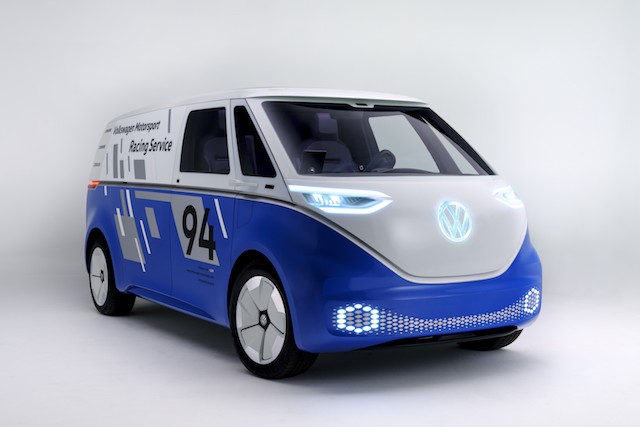
(Volkswagen images)
VW took the wraps off its I.D. BUZZ CARGO concept at the Los Angeles Auto Show. The spacious, zero-emissions, electric panel van concept is based on the VW Group's MEB toolkit and could be launched by 2022. It offers 340 miles of range on the WLTP cycle with the largest battery available, and with its "I.D. Pilot" mode it allows full autonomous driving. Unique features include a digital cargo system, 230V socket to provide power for workers' tools, and a solar roof that can extend the daily range by up to 9.3 miles. (11/28)
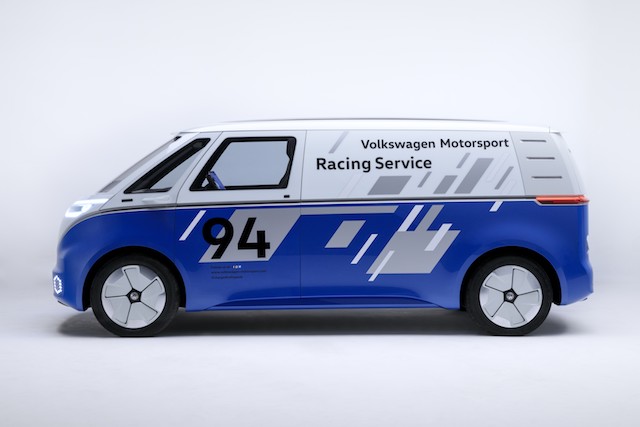
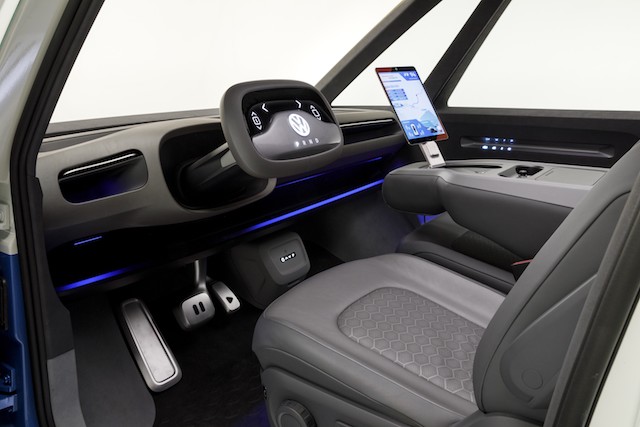

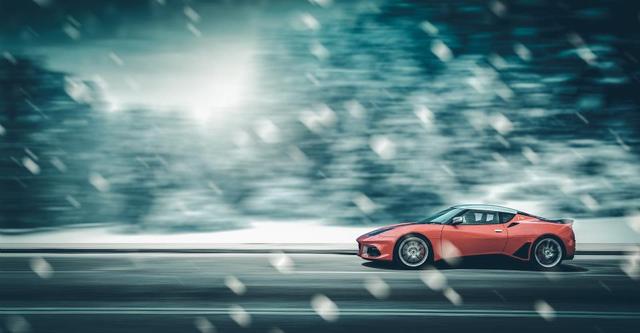
The Jim Clark Trust has announced an opportunity to win the 100,000th Lotus, a unique Jim Clark Evora GT410 Sport. For just £20 you can get a chance to win the Jim Clark special-edition Lotus Evora GT410 Sport, and support the charity as it builds a new museum dedicated to the legendary racing driver in his home town of Duns, Scotland. Available from the Jim Clark Trust’s website, while celebrating the legacy of one of motorsport’s most enduring figures, tickets are available worldwide from www.jimclarklotus.com The Jim Clark Lotus Evora GT410 Sport was specifically built to honor the red Lotus Elan driven by Clark in the 1960s, registration number 997 NUR, and was created by Lotus Exclusive for the Trust. As a mark of respect for the historic F1 team’s most successful driver, the Jim Clark Lotus Evora GT410 Sport is the 100,000th car built by the famous British Marque. Echoing the original car’s color scheme, with red paintwork, a silver roof and silver wheels, plus tartan upholstery, the car carries Clark’s signature on each rear buttress and includes a discreet interior plaque confirming its 100,000th build status. The winner of the competition will be announced at the opening of the new Jim Clark Museum. The new, expanded Jim Clark Museum will preserve the memory of one of the sports most revered racers and display some of the incredible cars that Clark competed in. Funded by a partnership between the Heritage Lottery Fund, Scottish Borders Council and The Jim Clark Trust, work on the new £1.6m museum began in June 2018 and the new museum is expected to open in summer 2019. (12/12)
Editor-in-Chief’s Note: And as is now tradition here at AE, we’ll close out 2018 with our favorite holiday commercial (from Apple). Watch it here. -PMD

(Lincoln)
Lincoln is getting into the special edition game for its 80th Anniversary by introducing the 80th Anniversary Lincoln Continental Coach Door Edition. Obviously paying homage to the iconic Continental design of the 1960s, the Coach Door Edition features an extended wheelbase (by six inches) and a rear-seat pass-through console with stowable tray table and tablet holder. There will be a limited run of 80 units, and it's scheduled to arrive next summer. We predict they will sell the shit out of 'em, and that the production total will magically grow. (12/17)




